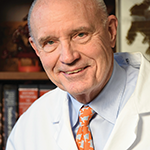
Image Credit: rnl/shutterstock.com
Updated Oct. 22, 2015 (revised to delete inaccurate statistics)
The cold, hard facts: This year’s rheumatology fellowship applicant pool resembles those of prior years. It is extremely diverse; every continent is represented, save Antarctica. It is somewhat larger, due in part to the growing influx of graduates from the cluster of Caribbean-based medical schools, where sprawling class sizes (with as many as 600 students enrolled per year) easily dwarf their North American counterparts. Yet, once again, much to my chagrin, the Year II rheumatology course that I direct at my medical school has failed to inspire even a single student to select rheumatology as their career choice. Harvard medical students rarely enter our specialty; nowadays, it seems that the number of students needed to find a single future rheumatology fellow is about 1,500.
Sadly, I am not the only fellowship program director dealing with this drought. American-trained medical students seem impervious to our métier. For the past several years, the growth of the national rheumatology applicant pool has been anemic, and lacking the influx of foreign trained students, the numbers would be far worse.
Fact: The likelihood of a medical student choosing rheumatology is much greater if that student graduated from a Caribbean, Middle Eastern or Indian medical school rather than an American one.1 Recently released data from the Association of American Medical Colleges (AAMC) demonstrate that for the 2013–14 academic year, about 48% of all rheumatology fellowship applicants were alumni of international medical schools. Only nephrology (68%) and endocrinology (54%) programs enrolled a higher number of foreign trainees. These percentages far exceed the proportion of foreign medical graduates (25%) training in all residencies and fellowships.
The likelihood of a medical student choosing rheumatology is much greater if that student graduated from a Caribbean, Middle Eastern or Indian medical school.
In sharp contrast, less than 5% of all dermatology residents and only 2% of all orthopedic trainees are foreign graduates, suggesting a passion for these disciplines among American medical students.1
Our orthopedic friends must be doing something right. Based on survey data, nearly half of the students entering medical school who selected orthopedics as their likely career choice go on to matriculate in this residency.1 Another specialty with such steadfast devotion is dermatology, in which 40% of entering students who chose “dermatologist” as their likely occupation, achieved this goal.
Dermatology and orthopedic trainees rank at the top of their medical school classes. Based on their Medical College Admission Test (MCAT) and U.S. medical licensure exam (USMLE I and II) scores and on the number of research experiences and abstract presentations during medical school, students headed to orthopedics are second to none.



